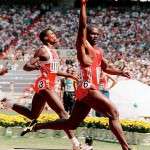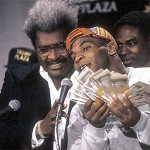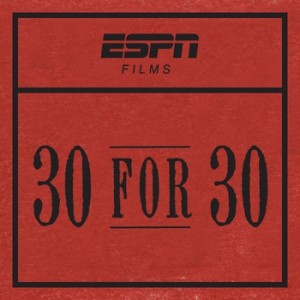(Spoiler alert if you haven’t seen the film or if you don’t know the story).
We havn’t done a review of a 30-for-30 documentary in a while because, well, it had been since April since one was released. Now there’s been a whole bunch that premiered this month, and we’re catching up.
Here’s some quick thoughts on Big Shot, the story of John Spano‘s incredible story of financial fraud and duplicity that enabled him to “purchase” and control the New York Islanders hockey franchise for a brief period in the mid 1990s. This film was directed and narrated by Kevin Connelly, better known as the character “E” from the HBO show Entourage. Connelly grew up on Long Island, is a lifelong Islanders fan, and had intimately followed this entire story during his childhood.
On the whole, I did not think this was one of ESPN’s best films. I disagreed with Bill Simmons‘ effusive praise to Connelly when they appeared on his podcast The B.S. Report, though in fairness it could have been a case of “stroking the ego” of the star. Connelly should have gotten a professional narrator; his voice overs were amateurish and lacked the proper cadence for a serious documentary. The film was 1.5 hours, probably 30 minutes too long for the story that it intended to tell. Even with an hour and a half, there are basic details on Spano’s wikipedia page that went uncovered. On the good side, the fact that Connelly got Spano on film (freshly released from his second stint in federal prison for financial fraud) really helps this story; I think back to the 30-for-30 piece on Allen Iverson that never featured the star player and the film comes of lacking. Also, the wide list of interviews the film shows (including basically every player in the drama, including the NHL commissioner Gary Bettman) gives the film a lot of credit. The podcast interview goes into some detail about this: Spano was very hesitant to do the interviews until realizing it was 30-for-30; had this been any other documentary he likelihood of Spano’s character getting completely trashed was high.
The story itself is amazing; Spano got an $80Million loan with almost no due diligence on the bank’s part. $80 million. Think about how much paperwork you went through the last time you bought a house or a car or a business loan. And, it is amazing to think about this story and see how close Spano really came to pulling it off; he was within a couple of days of finding someone to make his first $17M payment, and you’d have to think with a year to make the next payment he could have found a way to continue the charade. Also amazing to think is this: he *owned” the team; the papers were signed despite the money not showing up. Its like the analogy in the film; if you sign over the title of your car to some other guy … that’s HIS car, whether or not you got any money for it. Spano could have made this really, really ugly for the league when push came to shove, despite Bettman’s hollow statements that “the league never would have let” Spano continue to hold the team.
The funny thing is this; if you leave out the clear fraud, the phony documents, etc; this transaction was almost like an old school leveraged buyout. You get loans covering nearly the entire purchase price of a company, using that same company as leverage, and then make the loan payments from the coffers of the newly acquired company. Think about how Malcolm Glazer obtained control over Manchester United: a very similar deal. He “bought” his portion with tons of loans, put those loans on the books of the club, and financed the payments on the backs of the club’s profits. Spano himself was halfway to a completely leveraged buy-out already, and came pretty close to taking at least the first step towards the next phase.
The team has never come close to returning to its early 1980s glory years; it has just one division crown since 1985. It hasn’t advanced in the playoffs since 1993, and in the last 15 years had streaks of 8 and 5 straight playoff-less seasons. Whether that has anything to do with the ownership snafus, bad luck with players, or (more likely) due to difficulties working with Nassau county officials over the years (a fact only alluded to in the film) getting needed stadium upgrades remains arguable. As for Spano (as detailed in his wiki page), he got out of prison and was soon back for repeated financial fradulent behaviors.
All in all; a great story. But the documentary left a bit to be desired.


